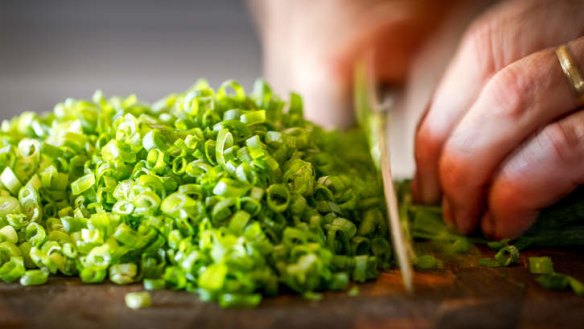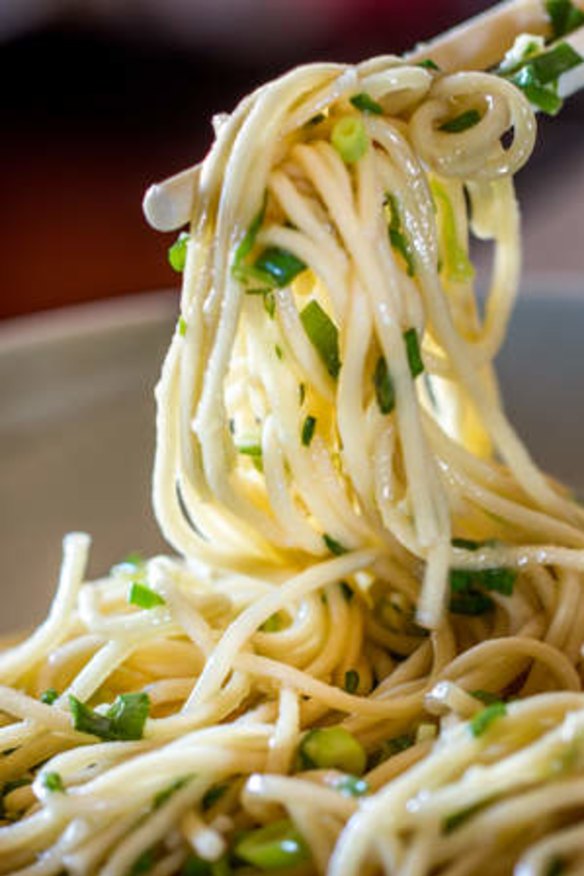Bacteria and yeast, the new energy

It's that time of year, a blank page and a feeling of apprehension that reminds me of riding a bike for the first time. Those first few feet you travel under your own steam are the most important. I still remember my dad perching me on top of a huge, brand-new, green Malvern Star three-speed and pushing me down the driveway ramp on to the gravel lane, which I hit face first. Years later, I hardly ever fall off my bike. And my lesson to myself is just get started.
Last year, I still owned pigs which could always be brought into the conversation. But now I am pigless (in the sense of live pigs; they live on as charcuterie) and plan a healthy, restorative year. I have come out of the festive season having lost something like 10 per cent of my body mass. I'm not sure if that is connected to being sans pig, but I feel supremely energised, and first up next month is febfast, my fifth year of giving up bad stuff like grog, coffee and methamphetamines - not really, I'm just up to the fifth season of Breaking Bad and it's awesome.
I shouldn't be promoting events so totally at odds with my real job - growing, making and selling a legal drug, wine. And I hear the groans from family and work colleagues, having to deal again with the rollercoaster emotional states of abstinence: me angry, sick, tortured, self-satisfied, a pain in the neck, and totally boring. But I'm a big supporter of giving up what sustains you, just so you don't take it for granted, yes?

The good news is my cookbook collection grew greatly late last year. One of the many benefits of being connected with this section is the number of cookbooks that arrive each year for editorial perusal and eventually filter through to us out at the coalface of food writing. So books like Coi, Rockpool Bar and Grill, Faviken and Dukan: The Oat Bran Miracle sit, pride of place, on the top shelf ready to direct me to new culinary places this year.
In Daniel Patterson's brilliant take on Californian food, Coi, my attention is caught by his use of lichen as a seasoning. I'm thinking there must be some of this stuff around the property or bathroom. He suggests you just get out there and start tasting it and points out that if it doesn't taste good off the brickwork on the wet side of the house, it's hardly going to taste good cooked into a steak. Sage advice. I've been here before after acquiring Rene Redzepi's Noma, trying to find weird stuff on the farm - I still can't find that musk ox. But lichen I have in abundance, I'll keep you posted.
The new breed of chef is not afraid of getting out in the fields, and using foods derived from microbes, fermentation and activation.
Which fits in with my post-festive new year disposition for restoration, rehabilitation and activation. The holiday up at Byron kick-started this new pork-less life stage, and my new bike, well it's a 25-year-old Repco Tri-A, is getting some solid use. Don't worry, I'm sure I'll revert to old demons, but it's kind of fun being healthy.
Up on the chilled-out north coast, there was an abundance of activated drinks of kombucha, ginger and turmeric. Interestingly, like my lichen, these are all drinks that use techniques of fermenting or activation, scoby-like: SCOBY - a symbiotic culture of bacteria and yeast. If you make sourdough, you have one of these in your fridge. I think lichen are more algae and fungus, but for my purposes it fits as a segue. And if you're trying to picture a symbiotic relationship, head down to the National Portrait Gallery. There's a famous photo there of '70s pop band Sherbet, all hanging around naked, sort of lounging as we did back then, entwined so you can't see where one guy ends and the other starts, but all working for one purpose. That is symbiosis.
Which got me thinking about the ginger beer my dad used to make - and a distinct childhood memory of exploding bottles from the basement. Ideally, you want to make you own "ginger beer plant", or GBP, for this. A GBP is true scoby but is almost impossible to make - you can get a result using yeast, sugar and dried ginger but this isn't true ginger beer. Apparently, GBPs were widely grown in days of yore, treated much like a yeast mother, and coming with your bride from the next village as a dowry. My bride came only with an economics degree, a VW Beetle and a bottle of tequila so I've had to find my own source of ginger beer plant, which I discover you can buy online. Go to gingerbeerplant.net where for nine quid they will send you (how it goes through Customs I don't know) one partially dried and active true GBP. You then go through a recovery process and use the plant as the source of bacteria and yeast to make fresh true ginger beer. Mine is still on its way from England but I hope it gets here soon, as new-season ginger is out.
Here's a simple noodle dish that uses fresh ginger and spring onions. If your place is like mine, the kids have pretty well lived on two-minute noodles during their unsupervised school holiday program. Make it like this and you'll never go back.
Gingered spring onion noodles
½ bunch spring onions (white and green), chopped finely
a thumb-size piece of fresh, new season ginger, scrubbed and very finely diced or grated
2 tbsp grapeseed or light olive oil
1 tbsp soy sauce
1 tbsp mirin
2 tbsp sherry vinegar
3 drops sesame oil
1-2 packets shaved katsuobushi (bonito flakes, about 5 g, available from Japanese grocers), optional
2-3 bundles dried ramen noodles, enough for 2 people
Mix the spring onions and ginger, season with the sauces and mix well. This will keep for a few days in the fridge so you can always make more - it's great in burgers and sandwiches. Bring a pot of water to the boil, cook the noodles as suggested in Japanese on the packet, about three minutes. Drain and toss through the katsuobushi if using, then the prepared gingered spring onion sauce. You can add steamed chicken, Chinese roast duck, pickled carrots, or a soft egg.
>> Bryan Martin is winemaker at Ravensworth and Clonakilla, bryanmartin.com.au
The best recipes from Australia's leading chefs straight to your inbox.
Sign up